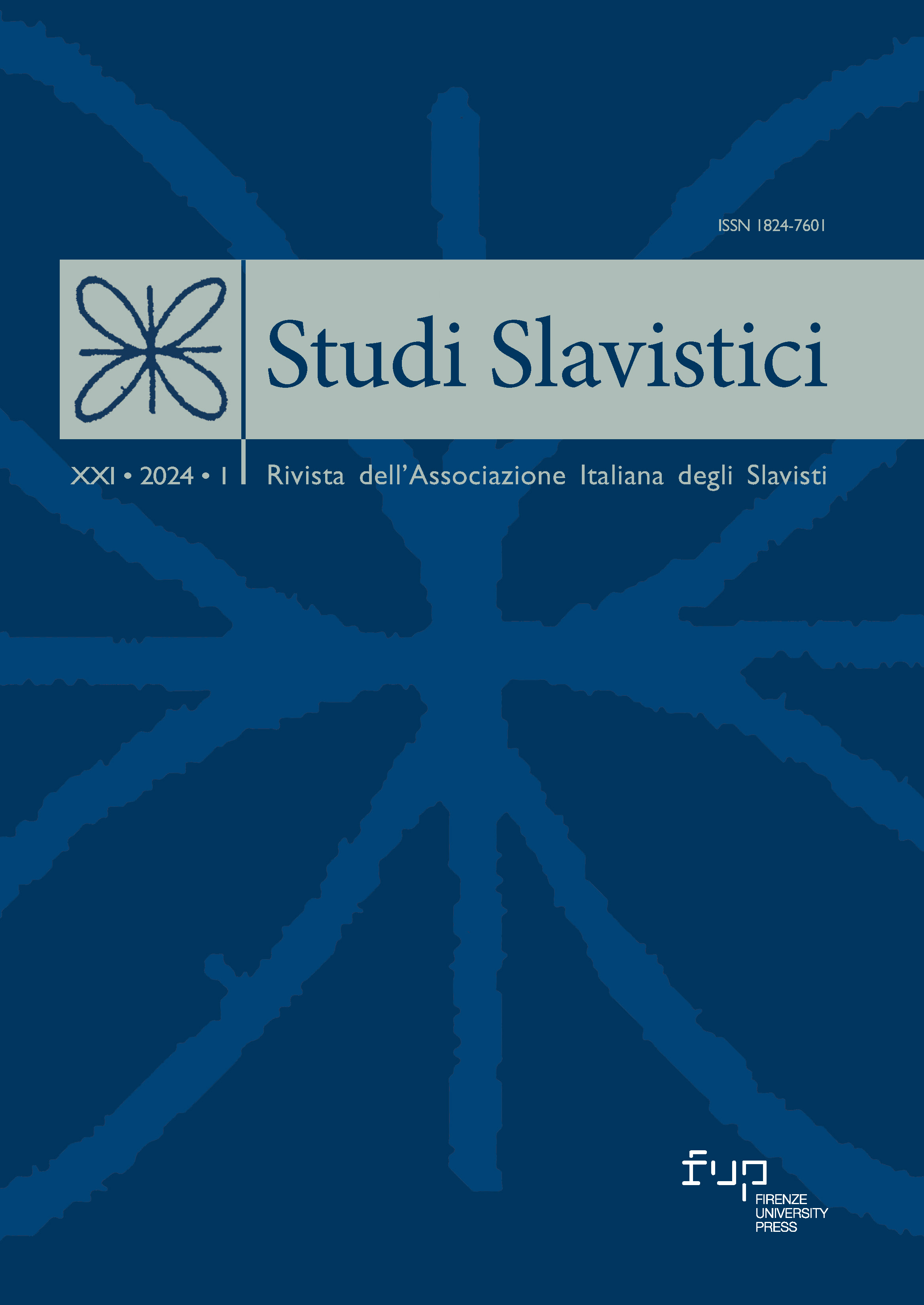Articoli
Unofficial Cults of Women in the Serbian Orthodox Church. The Example of the Nun Stefanida of Skadar, Bitola and Dečani
Published 2024-07-11
Keywords
- Serbian Orthodox Church,
- Serbian hymnograpgy,
- Serbian modern hymnographers,
- female saints
Copyright (c) 2024 Dominika Gapska

This work is licensed under a Creative Commons Attribution 4.0 International License.
Funding data
-
Narodowym Centrum Nauki
Grant numbers “Preludium 15” No. 2018/29/N/HS2/00340
Abstract
The paper is focused on a corpus of hymnographic texts dedicated to nun Stefanida/Stevka as an example of a literary work focused on the promotion of a newly revealed saint by the Serbian Orthodox Church, whose role is to elevate the spiritual essence of a society that underwent secularization during the socialist era, while revisiting the core principles of this society’s ideological resilience. By using means of expression, such as modern language (vernacular), fragments of Stevka’s letters, and Serbian cultural and religious topoi, the authors of the hymnographic texts made them more accessible to the contemporary believer. Additionally, the hymnographic texts symbolically represent the spiritual landscape of both past and contemporary Serbia, adding to a more comprehensive narrative about the historical cohesion of the Serbian Orthodox Church.References
- Atanasov 2023: E. Atanasov, Akatist na prepodobna Stefanida Bitolska i Skadarska, <http://pravoslavnaetika.blogspot.rs/2013/04/v-behaviorurldefaultvmlo_3.html> (latest access: 12.09.2023).
- Bido 2014: A. Bido, The Church Issue of Shkodra between Albania and Yugoslavia in its Initial Phase (1912-1923), “International Journal of Humanities and Social Science”, iv, 2014, 12, pp. 118-125.
- Damasceński 1969: Św. J. Damasceński, Wykład wiary prawdziwej, transl. B. Wojkowski, Warszawa 1969.
- Falina 2007: M. Falina, Svetosavlje a Case Study in the Nationalization of Religion, “Schweizerische Zeitschrift für Religions- und Kulturgeschichte”, 2007, 101, pp. 505-527.
- Končarević 2017: K. J. Končarević, The Influence of the God Worshipper Movement on the Language Policy and Religious Service of the Serbian Orthodox Church, in: A. Djurić Milovanović R. Radić (eds.), Orthodox Christian Renewal Movements in Eastern Europe, Cham (ch) 2017, pp. 173-189.
- Kragić 2023: B. Kragić (gl. ur.), Hrvatska enciklopedija. Mrežno izdanje, Zagreb 2023, <http://www.enciklopedija.hr/Natuknica.aspx?ID=42259>, (latest access 28. 7. 2023).
- Meta 2009: B. Meta, Qendrimi i shtetit shqiptar ndaj pakicës etno-kulturore vllehe dhe asaj malazeze në vitet 1920-1924 [The attitude of the Albanian State towards Vlach and Montenegrin etno-cultural minorities in theyears 1920-1924], “Studime Historike” , 2009, 3-4, pp. 45-66.
- Stefanida Skadarska 2011: Prepodobna Stefanida Skadarska i Bitoljska, Hriste moj životu, Podgorica 2011.
- Saggau 2019: E.H. Saggau, The Revival of the Serbian Orthodox Church in Montenegro from 1990, “Sociološka Luča”, xiii, 2019, pp. 9-25.
- Svetigora 2019: Svetigora, Mitropolit crnogorsko-primorski Amfilohije, 2019, <https://svetigora.com/mitropolit-crnogorsko-primorski/> (latest access: 24.05.2023).
- Vukić 2021: N. Vukić, Saintsavaism(s) and Nationalism: An Overview of the Development of the Serbian Orthodox Phenomenon of Saintsavaism, with a Special Focus on the Contribution of Justin Popovic (1894–1979), “Exchange. Journal of Contemporary Christianities in Context”, l, 2021, pp. 77-98.


